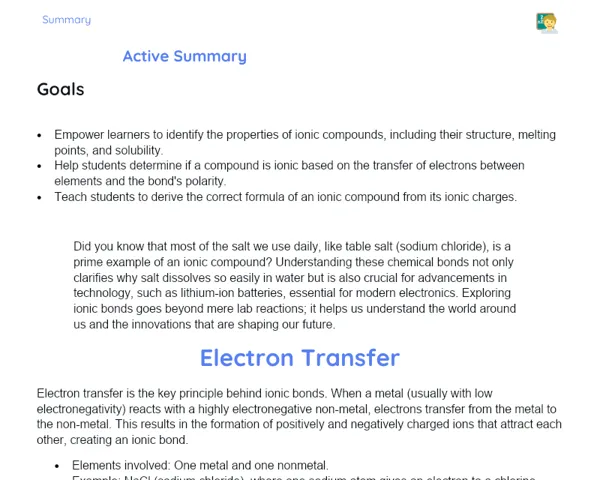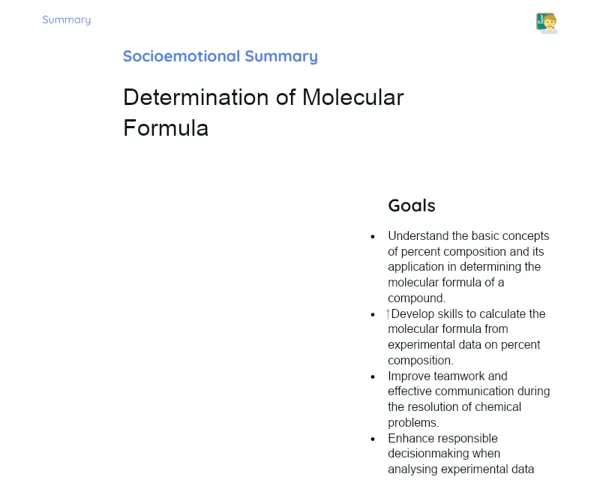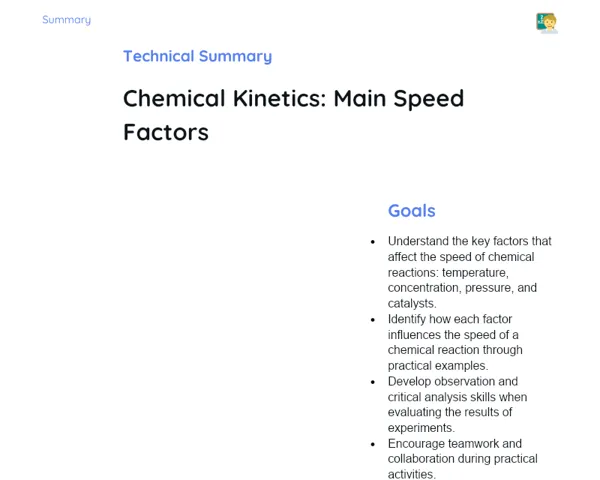Objectives
1. 🇿🇦 Understand what aldehydes are and how they differ from ketones.
2. 🔍 Identify the unique properties of aldehydes that make them important in fields like food production and perfumery.
3. 🧠 Develop critical thinking skills to evaluate and compare different organic functions in real-life situations.
Contextualization
Did you know that the sweet smell of almonds, often found in cleaning products and soaps, is due to an aldehyde? This distinctive aroma is produced by benzaldehyde, which not only gives almonds their familiar scent but is also a vital ingredient in many artificial fragrances and flavours. Aldehydes aren’t just about scent; they are integral to various chemical reactions and industrial uses, making them an exciting topic for any chemistry enthusiast!
Important Topics
Structure of Aldehydes
Aldehydes are a category of organic compounds marked by the presence of the functional group -CHO attached to a saturated carbon. This structure gives aldehydes distinct chemical properties, including the ability to be oxidised and a tendency to engage in addition reactions. The unique structure of aldehydes sets them apart from ketones, which feature the -CO- group linked to two carbon groups, impacting both their reactivities and applications.
-
The functional group of aldehydes (-CHO) is found at the end of a carbon chain, enhancing their reactivity relative to ketones.
-
A hydrogen atom bonded directly to the carbonyl group in aldehydes, like in formaldehyde (CH₂O), results in increased reactivity, making it a strong reducing agent.
-
Industries leverage the reactivity of aldehydes, from producing plastics to creating resins, where their polymerisation traits are crucial.
Physical Properties of Aldehydes
The physical characteristics of aldehydes, such as boiling point and solubility, are shaped by the polar nature of the carbonyl group and the intermolecular interactions at play. Aldehydes with low molecular weight dissolve in water due to the carbonyl group forming hydrogen bonds, while those with higher weights are less soluble. The distinctive smell of some aldehydes, such as benzaldehyde with its almond fragrance, is a significant sensory feature with applications in perfumery and aromatherapy.
-
Lower molecular weight aldehydes, like formaldehyde and acetaldehyde, are somewhat water-soluble, making them useful in industrial aqueous solutions.
-
The distinctive scent of some aldehydes, such as benzaldehyde, is harnessed in the fragrance industry, emphasising the role of sensory traits in organic chemistry.
-
Generally, the boiling point of aldehydes is lower compared to similar-weight alcohols and carboxylic acids due to weaker intermolecular hydrogen bonds.
Reactivity of Aldehydes
Aldehydes' reactivity is a key factor that sets them apart from other organic functions like ketones and carboxylic acids. They are easily oxidised to form carboxylic acids and can undergo nucleophilic addition reactions, which are vital in organic synthesis. These reactions are commonly investigated in labs and industry for producing diverse compounds, illustrating the significance of aldehydes in organic chemistry.
-
Oxidising aldehydes to carboxylic acids is essential in biochemistry and industrial processes, such as synthesising fatty acids.
-
When an aldehyde is hydrated, it can convert into an alcohol—a reaction often employed in drug and chemical synthesis.
-
The formation of acetals from aldehydes is a crucial reaction in supramolecular chemistry, applicable in materials and life sciences.
Key Terms
-
Aldehyde: An organic compound featuring the functional group -CHO at the end of the carbon chain.
-
Carbonyl Group: A functional group made up of a carbon atom double-bonded to an oxygen atom.
-
Benzaldehyde: A specific aldehyde that provides the almond aroma, widely used in perfumery and aromatherapy.
-
Formaldehyde: One of the simplest aldehydes, used as a preservative and in various industrial applications.
For Reflection
-
What makes aldehydes more reactive than ketones due to the hydrogen atom bonded to the carbon of the carbonyl group?
-
How do the physical properties of aldehydes, such as solubility and boiling point, affect their real-world uses?
-
What role does the reactivity of aldehydes in oxidation and nucleophilic addition play in synthesising important compounds in industry and biology?
Important Conclusions
-
In this lesson, we've delved into the intriguing world of aldehydes, examining their structure, physical and chemical properties, and their practical uses across various sectors, from food production to perfumery.
-
The vigorous reactivity of aldehydes, especially in oxidation reactions, underscores their necessity in many chemical and biological syntheses, highlighting their significance in organic chemistry.
-
We covered the differences between aldehydes and ketones, which is crucial for understanding their unique properties and specific applications, laying a solid groundwork for further exploration into organic functions.
To Exercise Knowledge
- Reactivity Test: Try conducting reactivity tests with some aldehydes using Tollens' and Fehling's reagents at home. Keep a record of your observations and discuss the results based on the molecular structures of the aldehydes. 2. Perfume Making: Use aldehyde essences to create your own perfume. Experiment with different combinations and see how the properties of aldehydes affect the final scent. 3. Cooking Experiment: Create a recipe that incorporates aldehydes to enhance or alter a dish's flavour. Discuss how the choice of aldehydes influenced the dish's outcome.
Challenge
Aromatic Detective Challenge: Craft a 'mystery perfume' at home using only common household ingredients, and identify each one by scent and your knowledge of aldehydes. Share your findings and identification process with your family or friends!
Study Tips
-
Use mind maps to connect different types of organic functions and highlight the specific traits that set aldehydes apart from ketones and other compounds.
-
Watch videos of chemistry experiments online that showcase the reactivity of aldehydes, which can help solidify your theoretical knowledge with practical examples.
-
Engage in online forums or form a study group with classmates to debate and expand your understanding of the role of aldehydes in environmental and health topics.



